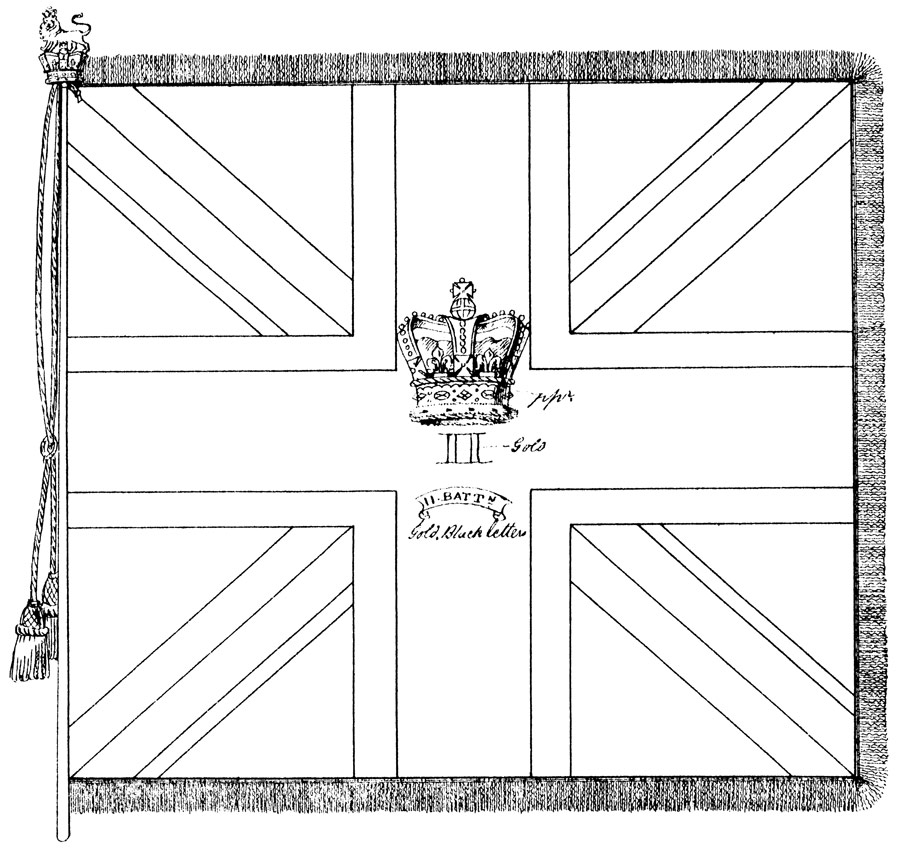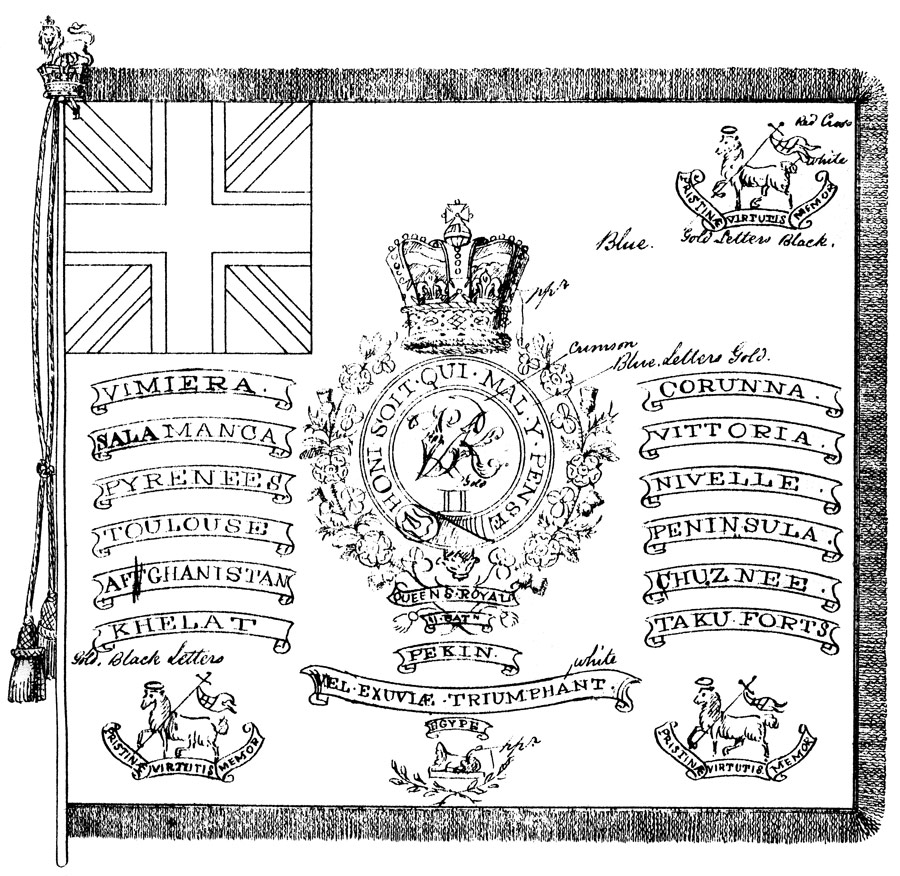The Colours of The Second or Queen’s Royal Regiment
The 2nd Battalion 1857-1948
In 1857, The Queen’s raised a Second Battalion in common with the Royal Scots, and the twenty-three regiments next in seniority below them. This was the third time that this had occurred in the history of the Regiment, but the first two occasions had been short-lived. This battalion was to last for ninety-one years, and it was the 2nd Battalion which gained the battle honours BURMA 1885-87 and SOUTH AFRICA 1899-1902.
 |
| Figure 23 - Colours and Drums of the 2nd Battalion. (Click to enlarge) |
 |
| Colour belt. 2nd Battalion The Queen's Royal Regiment. (Click to enlarge) |
The battalion received its Colours (see figure 22), the only stand it would hold during its life, from Lady Buller on 1st June 1859 at Corfu. Originally, it is believed, these Colours were full size, but in the course of time repairs were necessary in order to preserve the fabric. By the time of the Second World War the Colours had shrunk to the size of those which are now generally in service with infantry battalions. These Colours can be seen in the Regimental Museum at Guildford.
In general the Colours were of the same design as those of the 1st Battalion, and the same battle honours and distinctions were borne. However there were certain differences between the two Regimental Colours.
On the Regimental Colour of the 2nd Battalion, the Roman numeral II appears below the Lamb at the centre of the Union, instead of above it. Also, with the restoration of Queen Catherine’s cipher in 1902, a Roman II appeared below the cipher inside the Garter. Below the Garter there was no title scroll, but the Naval Crown was placed there in 1909. Below this was the motto “Vel Exuviae Triumphant” and directly below this, in line with the Naval Crown, the Sphinx. The battle honour scrolls were arranged in the same way as the 1st Battalion except that TANGIER 1662-80 and NAMUR 1695 appeared at the top of the Colour, left and right of the royal crown, and much smaller than the other battle honours.
In 1889, when the battalion returned from service in Burma, the Regimental Colour had to be almost completely remade, as there was little left of it but the pike and the tassels. It is possible that at this stage, the Colours were reduced from their original size of four feet by three feet six inches, to three feet nine inches by three feet. It also seems clear that the firm engaged (not known) changed the design of the paschal lamb badge to a swallow-tailed flag in the near hoof, instead of the then accepted pattern of a square flag in the off hoof.
These Colours, shown as figure 23, remained in service until the 2nd Battalion was disbanded in Berlin in 1948.
Queen's Colour |
Regimental Colour |
| Figure 23 (Click to enlarge) |
|
Related


